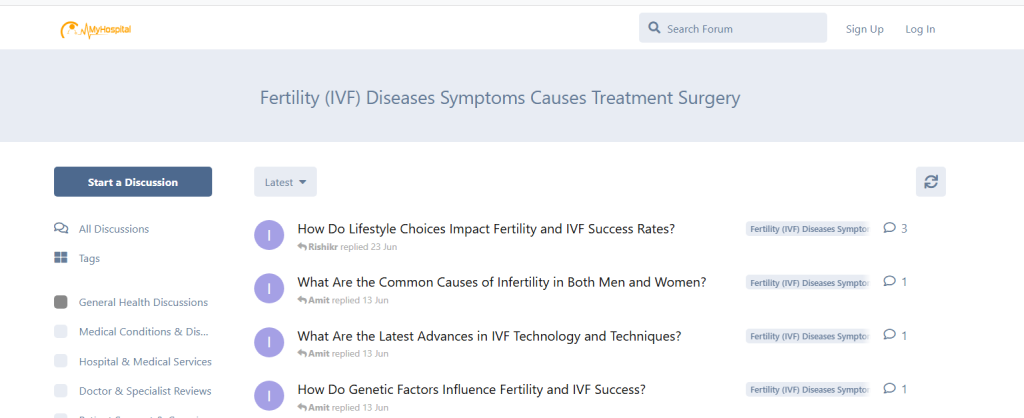
The global pursuit of parenthood through IVF is booming, yet the statistics hide a brutal reality: over 60% of couples still endure the emotional and financial agony of multiple failed cycles. Why? Because historically, a perfect-looking embryo was still a $15,000–$25,000 gamble based purely on appearance.
But a revolutionary shift is underway in the world’s leading fertility clinics. The trending, game-changing breakthrough is Preimplantation Genetic Testing (PGT)—a powerful screening tool that has turned IVF from a high-stakes gamble into a precision science.
This article is your essential guide to understanding the new global standard in IVF. We’ll show you exactly how top medical tourism destinations are leveraging PGT to achieve reported success rates up to 70% per single transfer, effectively cutting down on the need for costly, painful, and often heartbreaking repeat cycles.
The Critical Diagnosis/Breakthrough: The Hidden Crisis of Chromosomal Chaos
Why do even physically perfect embryos fail to implant, or worse, lead to a heartbreaking miscarriage?
The surprising statistic for professionals and enthusiasts: up to 70% of miscarriages are caused by a single issue—chromosomal aneuploidy (the wrong number of chromosomes). This risk skyrockets as maternal age increases, jumping from about 35% in women under 35 to over 60% in women over 40.
This is the hidden crisis that PGT-A (Aneuploidy Screening) solves. It allows fertility specialists to peek into the embryo’s DNA before transfer, ensuring only the genetically sound embryos—the “VIPs of the lab”—are selected.
| Concept | The Urgent Takeaway | The Ultimate Benefit |
| Aneuploidy | The wrong number of chromosomes, the #1 cause of IVF failure and miscarriage. | PGT-A screening doubles your chance of successful implantation. |
| Elective Single Embryo Transfer (eSET) | Transferring one tested, healthy embryo instead of two untested ones. | Dramatically reduces the risk of expensive and high-risk multiple births (twins/triplets). |
Case Study Spotlight: The ‘Fertility Firewall’ Strategy
A rising trend in elite medical tourism destinations is the mandatory adoption of PGT-A for specific patient profiles—a strategy we call the ‘Fertility Firewall.’
Case Example (Storytelling): A couple, Sarah (38) and James, traveled abroad after three failed, non-PGT cycles costing them over $60,000 back home. Their international clinic’s protocol included PGT-A. Of the 10 embryos they produced, seven were found to be aneuploid (genetically abnormal) and were discarded. Their doctor transferred a single, euploid (normal) embryo, resulting in a successful, full-term singleton pregnancy on the first PGT attempt.
The Insider Strategy: The initial investment in PGT (typically adding $3,000 – $7,000 to the cycle cost globally) dramatically reduces the overall financial and emotional cost by eliminating transfers that were statistically destined to fail. This is the definition of cost-effective, high-quality care.
Here are the three breakthroughs defining this fertility revolution:
A. Breakthrough 1: Genetic Screening (The Quality Lock)
PGT provides genetic certainty, ensuring the embryo is compatible with life before transfer. This is the ultimate tool for overcoming age-related fertility decline and recurrent implantation failure.
B. Breakthrough 2: The ‘Freeze-All’ Protocol (The Optimal Timing)
Testing embryos takes a few days. The top clinics freeze the healthy embryos using a technique called vitrification and transfer them in a separate, later cycle. This ensures the uterus (the landing zone) is not overly stimulated by IVF drugs, creating a perfectly optimized environment for implantation.
C. Breakthrough 3: ICSI (The Precision Fertilization)
Intracytoplasmic Sperm Injection (ICSI), where a single sperm is injected directly into the egg, is the preferred method alongside PGT. It guarantees fertilization and ensures no foreign DNA (like residual sperm) contaminates the delicate embryo biopsy sample sent for genetic testing.
For a comprehensive overview of the underlying causes of infertility, please visit your dedicated resource: Fertility & IVF Diseases: Symptoms, Causes, Treatment & Surgery.
Actionable Tutorial: The 4-Step Vetting Checklist for Global IVF
When evaluating a global IVF destination, you are not just purchasing a procedure; you are vetting a genetics laboratory. Use this checklist to select a center committed to the highest standards.
- Step 1: The Longevity Question (The Success Rate)
- DO NOT ASK: “What is your clinic’s general success rate?” (This rate is often diluted by all ages/treatments).
- DO ASK: “What is your live birth rate per single PGT-A tested, euploid embryo transfer for my age group?” (Look for answers in the 60%–70% range).
- Step 2: The Lab Credential (The Biopsy Expertise)
- DO NOT ASK: “Do you do PGT?” (Most clinics can ship samples out).
- DO ASK: “How many trophectoderm biopsies does your lab perform monthly, and what is the specific embryo survival rate post-biopsy?” (A high volume and survival rate >98% indicates competence).
- Step 3: The Technology Standard (The Sequencing Platform)
- DO NOT ASK: “Is the lab accredited?”
- DO ASK: “Which genetic analysis platform—specifically, is it Next-Generation Sequencing (NGS)—does your partner lab use for aneuploidy screening?” (NGS is the gold standard for accuracy).
- Step 4: The Transparency Protocol (The Cost Protection)
- DO NOT ASK: “What is the total price?”
- DO ASK: “Do you offer a multi-cycle or guarantee package that specifically includes PGT-A for financial protection in case the first cycle fails?”
Conclusion: Invest in Genetics, Not Just Geography
The future of fertility is about precision medicine. Choosing a medical tourism destination is no longer just about cost savings—it’s about accessing the advanced PGT technology that maximizes your success rate while minimizing your cycle count. By demanding this ‘Fertility Firewall’ and using this vetting checklist, you move beyond the outdated, hit-or-miss IVF model, transforming an emotional journey into a calculated, evidence-based path to building your family.